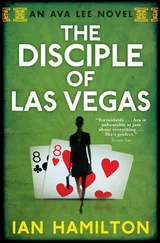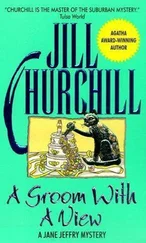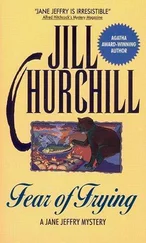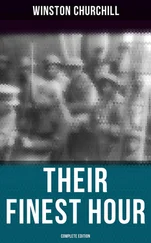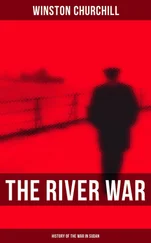Winston Churchill - Ian Hamilton's March
Здесь есть возможность читать онлайн «Winston Churchill - Ian Hamilton's March» весь текст электронной книги совершенно бесплатно (целиком полную версию без сокращений). В некоторых случаях можно слушать аудио, скачать через торрент в формате fb2 и присутствует краткое содержание. Год выпуска: 2018, Издательство: epubBooks Classics, Жанр: История, Прочая документальная литература, на английском языке. Описание произведения, (предисловие) а так же отзывы посетителей доступны на портале библиотеки ЛибКат.
- Название:Ian Hamilton's March
- Автор:
- Издательство:epubBooks Classics
- Жанр:
- Год:2018
- ISBN:нет данных
- Рейтинг книги:4 / 5. Голосов: 1
-
Избранное:Добавить в избранное
- Отзывы:
-
Ваша оценка:
- 80
- 1
- 2
- 3
- 4
- 5
Ian Hamilton's March: краткое содержание, описание и аннотация
Предлагаем к чтению аннотацию, описание, краткое содержание или предисловие (зависит от того, что написал сам автор книги «Ian Hamilton's March»). Если вы не нашли необходимую информацию о книге — напишите в комментариях, мы постараемся отыскать её.
London to Ladysmith
Ian Hamilton's March — читать онлайн бесплатно полную книгу (весь текст) целиком
Ниже представлен текст книги, разбитый по страницам. Система сохранения места последней прочитанной страницы, позволяет с удобством читать онлайн бесплатно книгу «Ian Hamilton's March», без необходимости каждый раз заново искать на чём Вы остановились. Поставьте закладку, и сможете в любой момент перейти на страницу, на которой закончили чтение.
Интервал:
Закладка:
The 23rd passed quietly, except for an intermittent bombardment of our camp by the Dutch guns and a Vickers–Maxim and the usual patter of musketry along the outposts. The diamond points on the distant hills seemed nearer and more to the east than before, and in the afternoon Brabazon was sent to reconnoitre towards them. As the Yeomanry emerged from the shelter of the plateau the Boer Creusot gun espied them. Brabazon, with half a dozen officers or orderlies, was riding fifty yards in front of his brigade.
'See there,' said the Dutch gunners, 'there is the Hoofd Commandant himself; take good aim.' So they did, and from a range of 5,000 yards burst their shell within two yards of the General's horse. 'Wonderful,' said Brabazon; 'why can't our forsaken artillery shoot like that?' and he ordered the brigade to canter by troops across the dangerous ground. I watched the scene that followed from comparative safety, 600 yards nearer the Boer gun. Troop by troop the Yeomanry emerged from shelter. As each did so the men opened out to dispersed order and began to gallop; and for every troop there was one shell. From where I stood the spectacle was most interesting. Between the shrieking of the shell overhead and its explosion among the galloping horsemen there was an appreciable interval, in which one might easily have wagered whether it would hit or miss.
The Yeomanry were very steady, and for the most part ran the gauntlet at a nice, dignified canter, pulling into a walk as soon as the dangerous space was crossed. After all no one was hurt, except three men who broke their crowns through their horses falling on the rocky ground. Indeed, I think, speaking from some experience, that we can always treat these Creusot 9–pounders with contempt. They fling a small shell an immense distance with surprising accuracy, but unless they actually hit someone they hardly ever do any harm. An ordinary bullet is just as dangerous, though it does not make so much noise.
At Vaal Krantz, in Natal, Dundonald's Brigade and other troops lived quite comfortably for three days under the fire of a 98–pounder gun, which in all that time only killed one soldier of the Dublin Fusiliers, two natives, and a few beasts. The wholesale aspect of artillery fire is not obtained unless at least a dozen guns are firing percussion shell or unless shrapnel can be used. At present the Boers often cause us a great deal of trouble with single guns, which, though they do scarcely any material harm, disturb every one, so that camps are shifted and marching columns ordered to make long détours ; whereas we ought to shrug our shoulders, as Ladysmith did, pay the small necessary toll, and go our ways uninterruptedly. But I am being drawn into detail and discussion, which, if I am ever to catch up the swift march of events, must be rigorously excluded.
The 23rd passed quietly for times of war, and the Boer riflemen and artillerists fired busily till dusk without doing much harm. We wondered how much they knew of the 'increased scale' of the operations. Did they realise the enormous strength of the forces closing round them? Were they going to be caught as Cronje was caught? It was hardly likely. Yet they were certainly holding all their positions in force at nightfall, and meanwhile the spring of the trap was compressed and the moment for releasing it arrived.
The morning of the 24th was unbroken by a single shot. Rundle, now in touch with Pole–Carew, swung his division to the left, pivoting on Chermside, to whom he entrusted the defence of the plateau. Brabazon with his Mounted Brigade formed the extreme outer flank of this sweeping movement. His orders were to join French, who drove inward from the north, somewhere behind Dewetsdorp on the Modder River. So we started, and, with much caution and the pomp of war, turned the enemy's left, and in solemn silence bore down on the flank and rear of his position.
Meanwhile, Chermside on the plateau was struck by the entire cessation of fire from the Boer lines opposite to him. He sent scouts to reconnoitre. Single men crept up the hill, looked into the trenches, and found—nothing. The Boers had retreated swiftly in the night. They enjoyed good information of all our movements and designs, had foreseen the impossibility of withstanding the great forces operating against them. They delayed us with the appearance of strength until the last minute. On the night of the 22nd they sent off their waggons towards Thabanchu. On the 23rd they made their effort against Wepener, and attacked the garrison heavily, and on the night of the 24th, having failed at Wepener, they performed a masterly retreat, the assailants of Wepener marching northwards via Ladybrand, the covering force at Dewetsdorp moving on Thabanchu.
And so it was that when, as directed, Brabazon circled round the enemy's left flank and struck the Modder River—here only a rocky ditch with occasional pools of mud—and when French, moving from Leeukop round and behind their right flank, met him, they found the Dutch already departed, and Dewetsdorp again under the Union Jack. The strong jaws of the rat–trap shut together with a snap. I saw them—black across the open plain—two great horns of cavalry and guns; but the rat had walked comfortably away some hours before. Chermside moving over the empty trenches occupied the town. Rundle, reaching it an hour later, owing to his turning movement, hurried on through it to the Modder, and laid Brabazon's dusty squadrons on the retreating enemy. Indeed, the latter officer was already at the trot towards Thabanchu when French himself arrived—a large and magnificent staff, 'pom–poms,' horse artillery, and two cavalry brigades—and assumed supreme command.
He immediately stopped the pursuit, sent Brabazon back to relieve Wepener—which place had by its plucky defence, like Jellalabad, relieved itself—and entered Dewetsdorp, where he remained until the next day.
Such is the story of Dewetsdorp, which cannot be contemplated with feelings of wild enthusiasm. The Wepener situation was cleared up, and the Boers were persuaded to retire from the right hand bottom corner of the Free State towards Ladybrand and Thabanchu at an exceedingly small price in blood. On the other hand, the enemy might boast that 2,500 Burghers with six guns had contained 13,000 troops with thirty guns for a week, while their brethren worked their wicked will on Wepener, and had only been dislodged by the setting in motion of more than 25,000 men and seventy guns.
The movements which followed the occupation of Dewetsdorp need not take long in the telling. French's occupation of the town instead of pursuing the enemy was not in accordance with the Commander–in–Chief's ideas, and the cavalry leader was forthwith ordered to follow the Boers at his best pace to Thabanchu. He started accordingly at daylight on the 25th, and Rundle with the Eighth Division followed at noon. Chermside remained at Dewetsdorp with part of the Third Division, and was entrusted with the re–establishment of order through the disturbed districts.
Brabazon marched on Wepener and collected the garrison. Their defence of seventeen days, under continual rifle and shell fire, in hastily dug trenches, which they were unable to leave even at night; exposed to several fierce attacks; in spite of heavy losses and with uncertain prospects of relief, will deserve careful attention when full accounts are published, and is a very honourable episode in the history of Brabant's Colonial Brigade, and particularly in the records of the Cape Mounted Rifles, who lost nearly a quarter of their strength.
Bringing the defenders with him, and having communicated with Hart and Brabant, Brabazon returned to Dewetsdorp, and was ordered to move thence to Thabanchu, which he did in an exceedingly convenient hour, as it turned out, for a certain convoy with an escort of Scots Guards and Yeomanry. Pole–Carew and the Eleventh Division returned to Bloemfontein to take part in the main advance.
Читать дальшеИнтервал:
Закладка:
Похожие книги на «Ian Hamilton's March»
Представляем Вашему вниманию похожие книги на «Ian Hamilton's March» списком для выбора. Мы отобрали схожую по названию и смыслу литературу в надежде предоставить читателям больше вариантов отыскать новые, интересные, ещё непрочитанные произведения.
Обсуждение, отзывы о книге «Ian Hamilton's March» и просто собственные мнения читателей. Оставьте ваши комментарии, напишите, что Вы думаете о произведении, его смысле или главных героях. Укажите что конкретно понравилось, а что нет, и почему Вы так считаете.

